Does a winning photograph jump out at you? Sure, we can talk earnestly of composition, an interesting subject, a telling juxtaposition, or the abstract interplay of colour, texture and light. But perhaps more than any other visual art form, what strikes us most about a photographic image remains somehow more elusive. And the hand of the artist who presses the shutter, rather than wields the brush, is not so easily perceived.
Which brings us to this year’s winning entry for the National Portrait Gallery’s Photographic Portrait Prize. The standard for this annual award and exhibition remains consistently high, but it is like most prizes: we can usually assume that it’s the compromise vote that wins. How else would one explain how Paul Floyd Blake’s portrait of Rosie Bancroft bagged first prize?
A teenage competitive swimmer looks calmly at the camera just moments after swimming her personal best. We barely notice that she has a prosthetic right foot, and, in any case, this isn’t part of a series focusing on disabled athletes but at those young hopefuls in training for the 2012 London Olympics. The teenager sits by herself in a changing room that glows in a slightly otherworldly, ethereal blue, and in her look of quiet confidence and in her solitary pose we can perhaps not only appreciate the single-minded determination that drives any successful athlete but also how this might separate her from the rest of her peers.
So, as a portrait, Floyd Baker’s image certainly succeeds in telling us something important about the sitter, and about the sitter’s life. Does it matter then that it fails to arrest your gaze, or to yield anything beyond that initial perception, that initial narrative, or dialogue? Should we look for photographs that excite us?
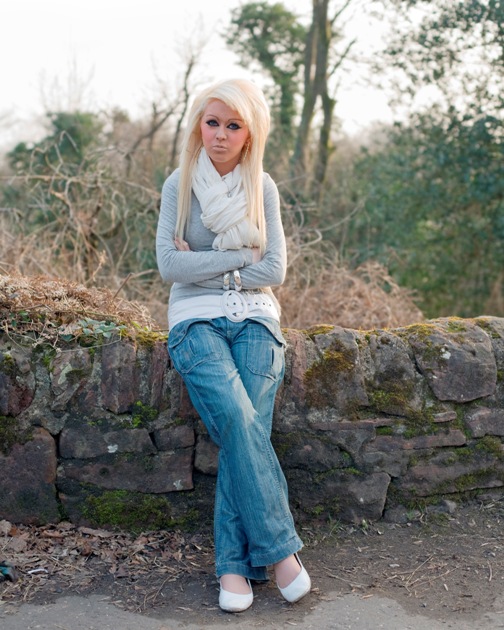 Take another photograph in the exhibition: Neal Kirke’s Katherine (picture right) It is quite different in its visual language – it was taken outdoors in natural light for a start – but again, it is of a solitary teenager. Katherine has over-processed, white blond hair, wears thick orange make up and sports drawn-on eyebrows. There is something arrestingly Diane Arbus-like about this image. We can be certain it’s to do with that uncomfortable disjunction created between the subject’s self-perception and the viewer’s perception of the subject. Is the photographer inviting us to simply observe this disjunction or to invite some cruel element of voyeurism?
Take another photograph in the exhibition: Neal Kirke’s Katherine (picture right) It is quite different in its visual language – it was taken outdoors in natural light for a start – but again, it is of a solitary teenager. Katherine has over-processed, white blond hair, wears thick orange make up and sports drawn-on eyebrows. There is something arrestingly Diane Arbus-like about this image. We can be certain it’s to do with that uncomfortable disjunction created between the subject’s self-perception and the viewer’s perception of the subject. Is the photographer inviting us to simply observe this disjunction or to invite some cruel element of voyeurism?
So not only do we wonder at the life of the sitter, but we’re invited into an interesting dialogue with the photographer. In addition, we also think of social class and what it’s like trying to be a hard-faced grown-up when you’re still in your vulnerable teens. In other words, it’s an image that takes us beyond what is merely portrayed. That doesn’t necessarily make it a more worthy prizewinner, just a more interesting image. On the other hand, maybe we’ve seen too much of this sort of thing before.
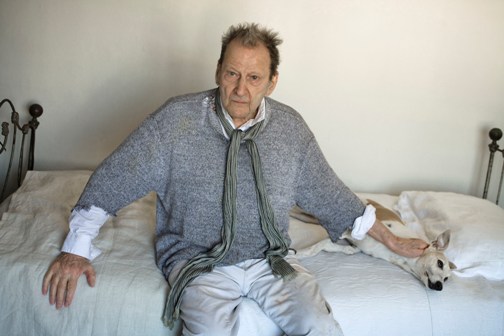
There are other interesting portraits in this show. We might, for instance, ask why it is that Lucian Freud, here portrayed by Koos Breukel (picture above), always wear the same expression of startled bemusement in any photo we encounter of him? The artist who paints his naked sitters in livid, cadaverous colours, clearly feels uncomfortable exposing himself to another artist’s gaze.
Photographs create narrative, and sometimes the viewer has to work hard at finding what the image wants to say. Still, it would have been illuminating to have been a fly-on-the-wall when the judges made that final shortlist.
The exhibition continues until 14 February 2010. Admission is free. More information here.





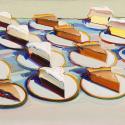

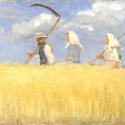

![SEX MONEY RACE RELIGION [2016] by Gilbert and George. Installation shot of Gilbert & George 21ST CENTURY PICTURES Hayward Gallery](/sites/default/files/styles/thumbnail_125_x_125_/public/mastimages/Gilbert%20%26%20George_%2021ST%20CENTURY%20PICTURES.%20SEX%20MONEY%20RACE%20RELIGION%20%5B2016%5D.%20Photo_%20Mark%20Blower.%20Courtesy%20of%20the%20Gilbert%20%26%20George%20and%20the%20Hayward%20Gallery._0.jpg?itok=3oW-Y84i)




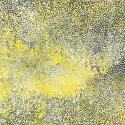
Add comment